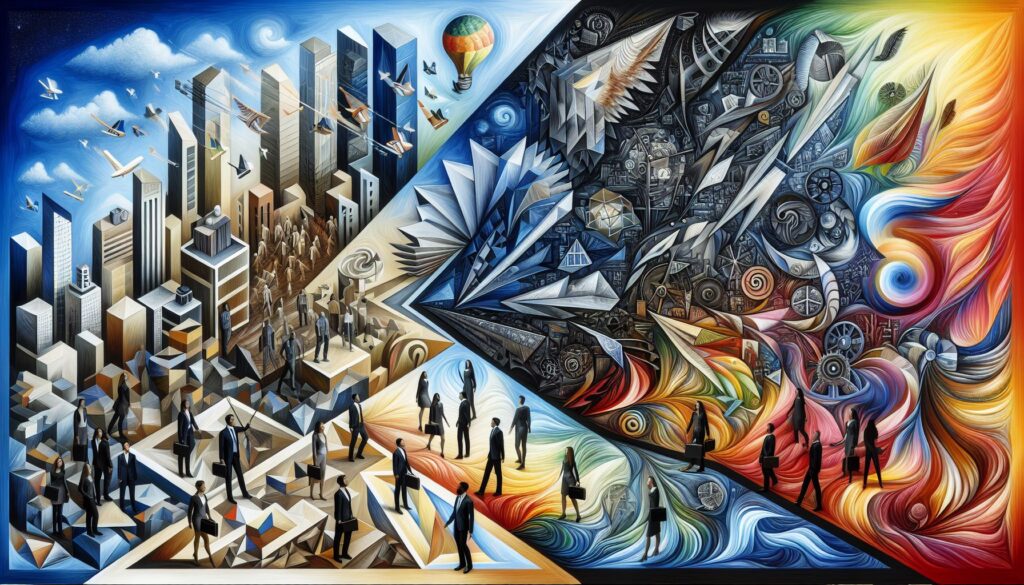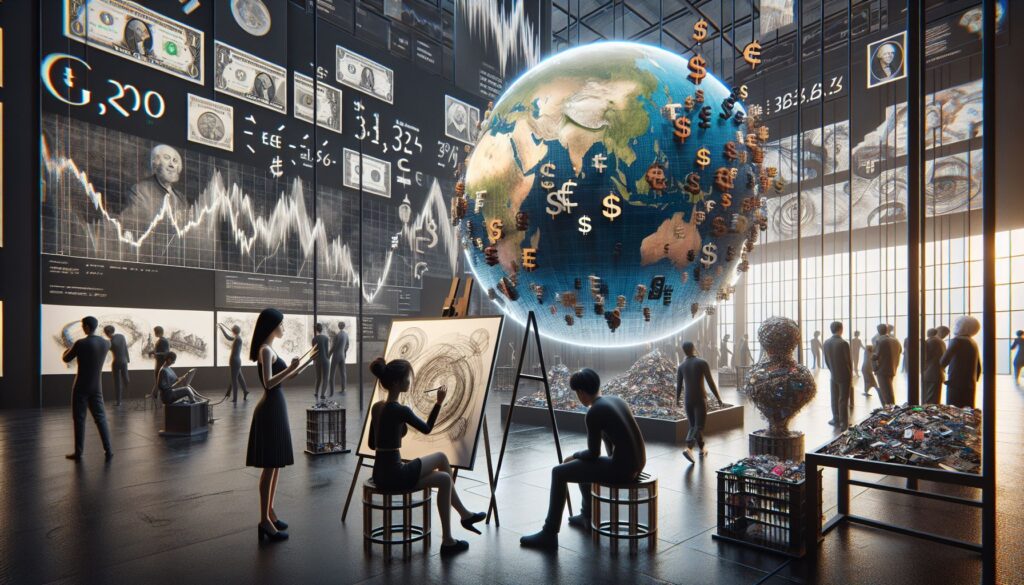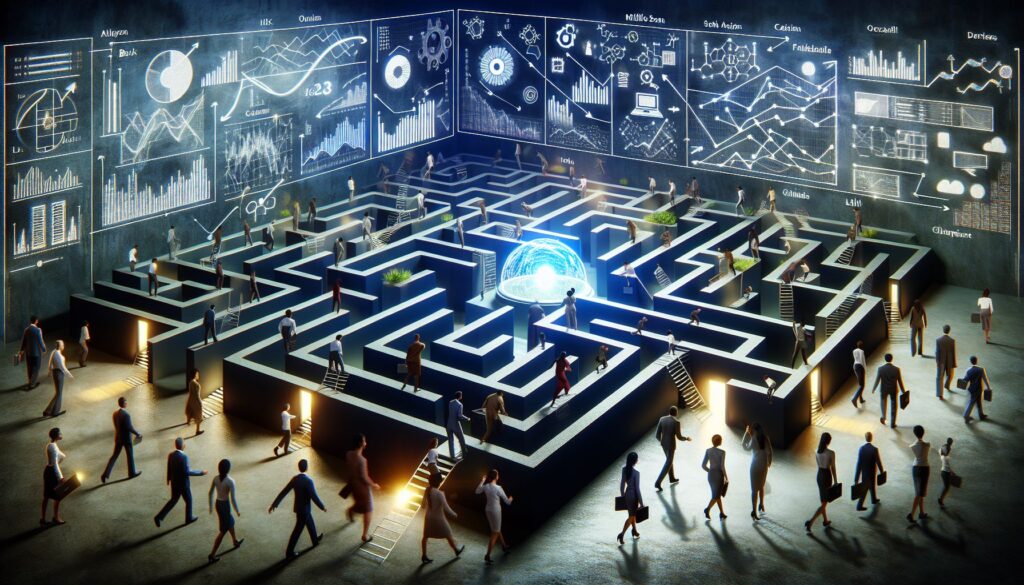Art is an indispensable embodiment of human expression, one that continually shifts and reflects the evolving dynamics of our society. As the proverbial dust in the wake of the Industrial Revolution began to settle, the robust tradition of craftsmanship fittingly found its rebirth in the throbbing heart of the modern business world. The interwoven tapestry of commerce and culture continues to unfold, revealing a rich diversity of forms and materials characteristic of the zeitgeist of our times.
 There is an intense vitality that permeates today’s art landscape, an electric current that entwines the abstract and the concrete, blurring the lines between business and creativity. Born and nurtured in this fertile ground, a multitude of artists, both emerging and established, are pushing the boundaries of traditional paradigms and exploring new ways of seeing and representing the world in their works.
There is an intense vitality that permeates today’s art landscape, an electric current that entwines the abstract and the concrete, blurring the lines between business and creativity. Born and nurtured in this fertile ground, a multitude of artists, both emerging and established, are pushing the boundaries of traditional paradigms and exploring new ways of seeing and representing the world in their works.
Emerging artistic operators, often sparked by the catalytic influence of digital media, are tearing pages from the books of traditional frameworks, and in their stead, scripting novel narratives. One must only glance at the revolutionary work of Njideka Akunyili Crosby, who, through her large-scale collages, forges a powerful dialogue between global influences and personal histories.
At the same time, more established names in art continue to push their creative limits and redefine the dimensions of their craft. Take, for example, the venerable master of illusion, Anish Kapoor, who consistently plays on the viewer’s perception and manipulates conventional conceptions of space and matter in his monumental sculptures. These visionaries, each wielding a unique artistic voice, are the forces that sculpt the contemporary art world into the pulsating, diverse ecosphere that it is.
In tandem with the artistic proliferation, we cannot disregard the currents that shape this landscape. Art has now not only transcended the confines of physical canvases but also overturning the economies of traditional galleries. Digital platforms have engendered a democratised space, fueling the rise of virtual exhibitions, blockchain-powered art collectibles (also known as NFTs), and online art marketplaces. The digital revolution and its accompanying technologies not only created a gateway for wider audiences but also challenged the status quo of art transactions.
With our imagination as the only limit, the realm of art is set to undergo dramatic shifts in the future. The fusion of artificial intelligence and creativity, for instance, will create uncharted territories in the art world. From auto-generated paintings done by algorithms to bots curating your digital galleries, the line between the creator and the created is bound to get blurred.
Another exciting prospect is climate-responsive art, amplified by the global urgency to address ecological issues. Art, thus, becomes a powerful tool to propagate sustainable awareness and influence business strategies in an eco-conscious direction.
Art, in all its forms and manifestations, is nothing short of a societal mirror, reflecting and sometimes amplifying the flowing undercurrents of our times. After all, art and business don’t simply coexist; they feed off and enrich each other, carving out a unique space where creativity meets commerce. The ongoing lens of scrutiny and foresight into the future only hyperventilates the anticipation of the years to come, setting up the stage for groundbreaking innovations and narratives to take center stage in the art world. Exciting, isn’t it?




